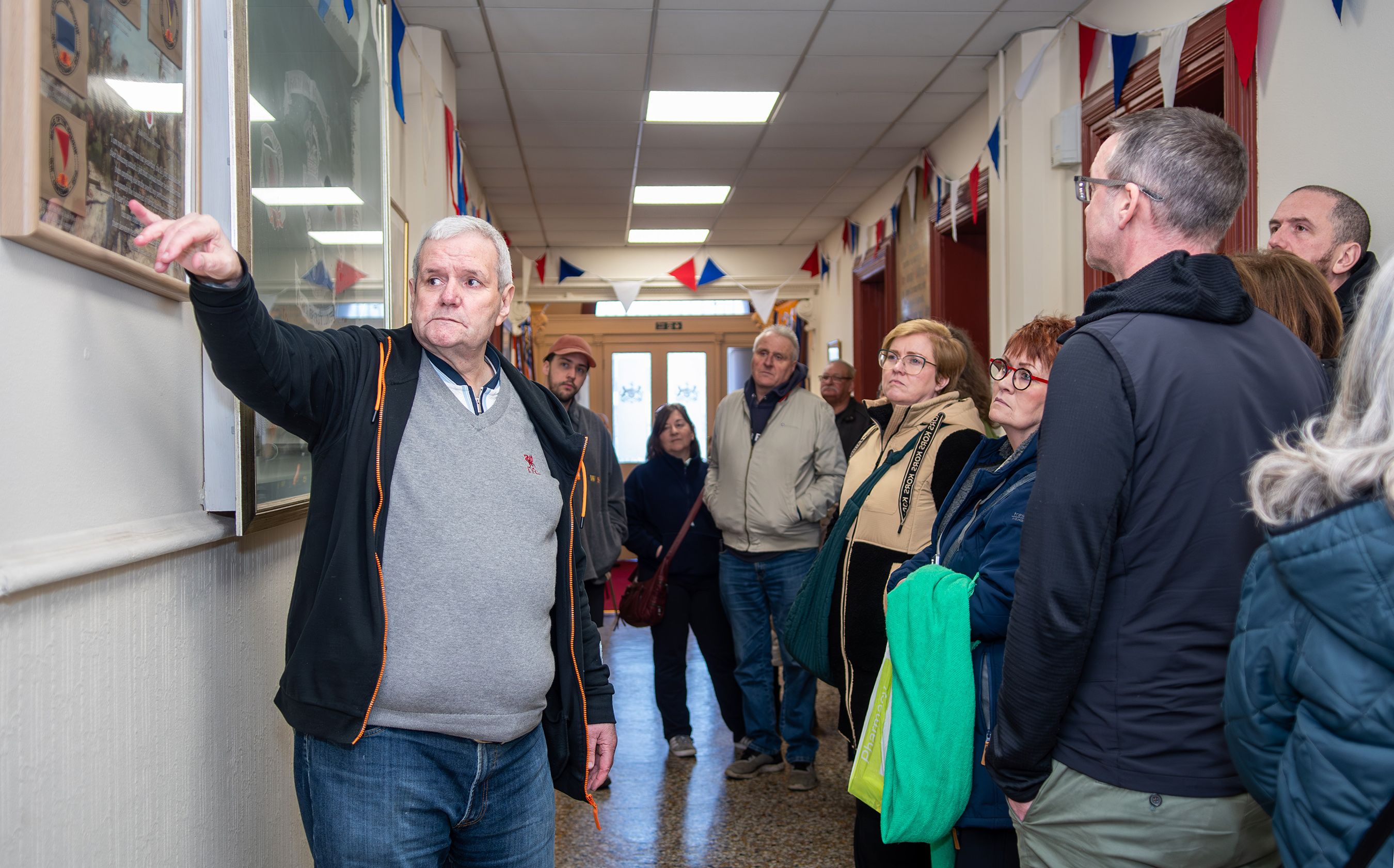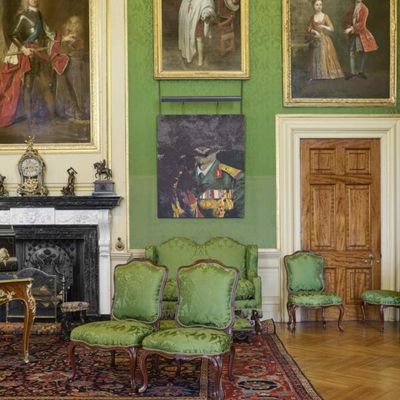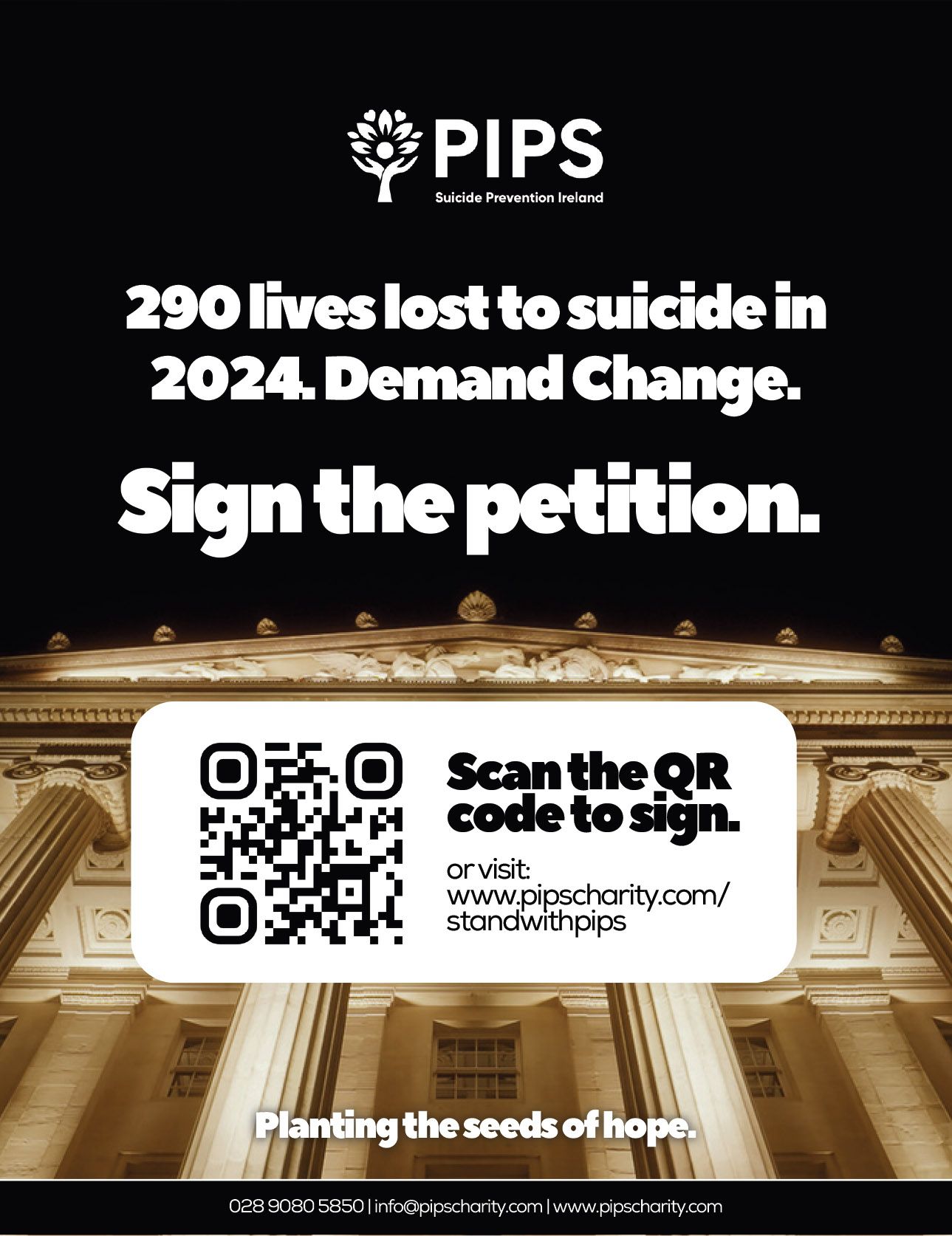Deborah Stockdale textile artist talking about her work at the Guildhall on the Plantation @ConflictTextiles #StitchingSolidarity pic.twitter.com/jd3ZdIfIlV
— INCORE Ulster University (@INCOREinfo) March 1, 2025
WHILE participants gathered from all around the world at the 'Stitching Solidarity: Activism in Textile Art Symposium' at the Belfast School of Art over the weekend, Belfast and Derry have been alive to the discussion around conflict and textiles.
Brandon Hambor, Incore Chair at Ulster University, who was part of the truth and recovery process in South Africa which collected the testimony of over 20,000 people, said he had a revelation when Roberta Bacic – who had been part of a similar process In Chile – brought to him an arpillera, or story cloth. It was a medium for women working collectively to denounce the human rights abuses and repression of the Pinochet dictatorship in Chile from 1973 to 1990. It contained the testimony of women in Chile who had witnessed great violence and the seed was sown for the conflict textiles collection, which is in the process of being gifted to Ulster University.
The collection attracts people from all over the world to research and compare this medium and pieces from it are requested globally for exhibitions. The university has made a commitment to adding to it and rotating exhibitions around Ireland North and South.
During the Belfast symposium, we heard from Gaby Franger, Chair of the International Association of Women's Museums, about a programme in Germany that buys embroidery squares from women in Afghanistan, sending someone over to buy directly from them four times a year. At first came flowers and decorative squares, then came images of domestic abuse, then the impact of land mines and the everyday images of guns in the community.
The pieces are sold on in Europe, and because the war and conflict images are not easy to sell, they are kept as a record of their testimony. Exhibitions in Germany of the work, as well as workshops, have created solidarity with migrant women whose only common language is often the language of the needle.
Azadeh Sobout from Syria, who completed her PhD at Ulster University and is now employed by Queen's, has researched Palestinian refugees in Lebanon and how hope and home are kept alive by traditional Palestinian embroidery. She spoke of going into refugee camps with a strong feeling of Palestine created by the embroidery and needlework hung inside the shelters. Men also embroider in prison as a way of making money for their families.
The overarching theme is that people cope with their tragedies in a better way once they have brought out in their stitching things that they cannot talk about.
'Threads of Empowerment: Conflict Textiles' International Journey' continues at Ulster Museum Gallery 3 until April 27.
Meanwhile, the Look North festival is over for another year with my favourite discovery being that inside the Clifton Street Orange Hall banners often have the Irish language, and indeed and a pre-partition painting of Ireland which hangs in one of the stairwells has Irish in it. It was only after 1921 that the language became a field of conflict.
During the tour, only one person said they had been in an Orange Hall before. Curiosity is a wonderful thing.
Clifton street orange hall @northbelfast100 has a number of items with Irish on them , pre 1921 this was normal but stopped at partition pic.twitter.com/66aGZy6ftQ
— Bronagh Lawson (@CreativChangeNI) February 28, 2025







